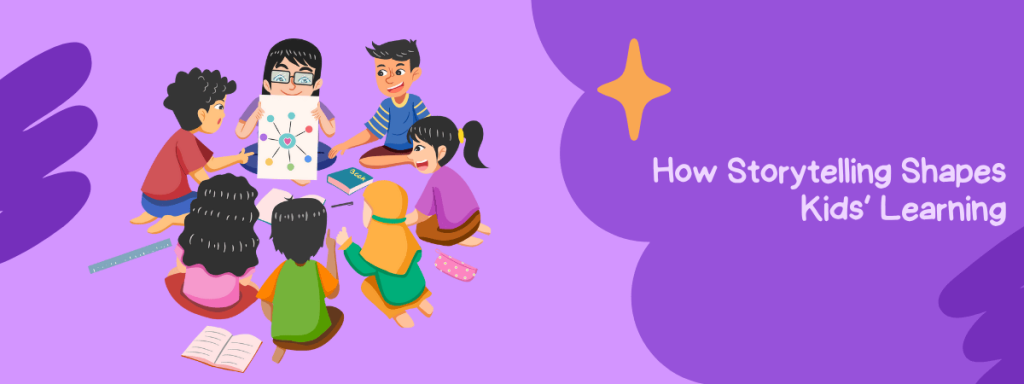Stories are one of the earliest ways children make sense of the world. Before they fully understand written words, they respond to tone, repetition, rhythm, and images. More than entertainment, stories become tools for learning. They help children recognize emotions, develop language skills, and build a moral framework they carry with them as they grow.
While academic books focus on facts and skills, learning book for kids that use storytelling reach deeper. They do not just teach what to know. They show how to feel, how to act, and how to think through unfamiliar situations. Storytelling activates imagination, memory, and empathy all at once, making it one of the most powerful ways to shape early development.
How Stories Help Kids Learn
In early childhood, the brain is developing rapidly. Children are learning how to organize ideas, regulate emotions, and connect cause with effect. Stories support all of these cognitive milestones. They give children characters to relate to, problems to follow, and resolutions that feel satisfying and safe.
When a child hears or reads a story, they are not just following the plot. They are mentally rehearsing how they might act in similar situations. This is especially true in stories with emotional themes. Whether the character is misunderstood, facing a fear, or making a mistake, children learn by watching how those emotions are handled.
Repetition and rhythm also play a role. When stories repeat key phrases or follow familiar patterns, they help children anticipate structure and build confidence. Over time, this supports not only literacy, but attention span, memory, and reasoning.
What Makes a Great Learning Book for Kids
Not every picture book qualifies as a strong learning tool. The best ones combine educational content with emotional depth and narrative clarity. Here are a few traits to look for:
- A relatable main character with realistic emotions
- A problem or moment of conflict that is understandable to young readers
- An adult figure who models empathy, growth, or humility
- A story resolution that feels earned and respectful, not forced
- Language that invites discussion and exploration
Learning books that include these elements offer more than a moment of reading. They open the door for lasting understanding and emotional literacy. These books become mirrors and windows. Mirrors when children see themselves in the characters, and windows when they glimpse perspectives outside their own.
A Story That Shows It All: Yes, Mrs. Holstein, There Are Purple Peppers!
In Anine Grumbles’ picture book, based on a true story, a young boy named Coby is asked to color a pepper as part of his preschool class activity. Coby colors the pepper purple because that is how he sees them grow in his family’s garden. His teacher, however, tells him that purple peppers do not exist and accuses him of lying.
This moment becomes the emotional centre of the story. Coby is hurt, confused, and ashamed. He knows what he saw. But someone he trusts, his teacher, says it is wrong. What follows is a quiet and authentic portrayal of how children process doubt, truth, and validation.
Coby’s parents do not dismiss him. They listen. They help him find proof without anger or confrontation. When Coby returns to school, he shows the purple pepper and offers it kindly. His teacher, faced with new information, admits she was wrong.
This story models more than accuracy. It models emotional growth, conflict repair, and the power of voice. It is not loud. It is not dramatic. But it is true, and that truth gives children permission to trust their experiences while learning how to respond to misunderstandings.
For more on the emotional depth of this title, read our detailed review in Why Yes, Mrs. Holstein, There Are Purple Peppers! Is an Ideal Learning Book for Kids. If you’re exploring a wider selection of titles, see Best Learning Books for Kids in 2025 That Build Emotional Intelligence.
Final Thoughts
Children learn in many ways. They learn through play, through watching adults, and through the stories they hear and read. Storytelling, especially when rooted in real-life experiences and emotional honesty, becomes one of the most lasting tools in shaping who they are and how they see the world.
A great learning book for kids will not just teach a lesson. It will create space for reflection, growth, and connection. These are the books children remember. These are the stories that help them grow strong from the inside out. To explore a heartfelt, true-to-life story that brings emotional learning to the classroom, discover Yes, Mrs. Holstein, There Are Purple Peppers!
